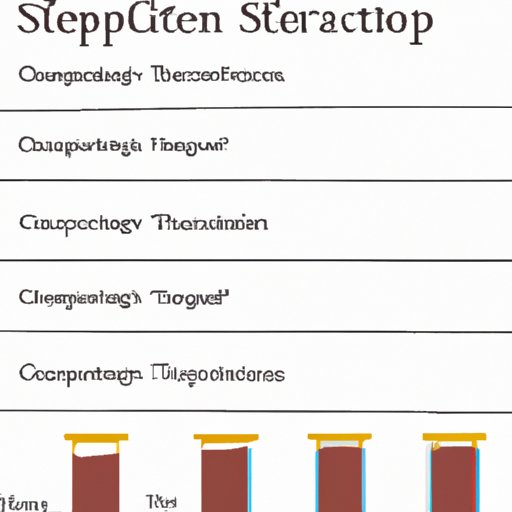Introduction
A strep culture is a laboratory test used to determine if an individual has been infected with Streptococcus bacteria. This type of bacteria is responsible for causing illnesses such as strep throat, scarlet fever, and other bacterial infections. The strep culture process involves isolating and growing the bacteria from a sample taken from the patient, usually from their throat or nose. It is an important diagnostic tool for doctors to use when diagnosing and treating bacterial infections.
The purpose of this article is to explore the timeline and science behind strep cultures. We will look at what you need to know about how long a strep culture takes, compare the timeframes of different types of strep cultures, and discuss the steps in the process and factors that can affect the duration of a strep culture.
Exploring the Timeline: How Long Does a Strep Culture Take?
When it comes to strep cultures, one of the most common questions people have is “how long does it take?” The answer to this question is not a simple one, as there are a few factors that can influence the duration of a strep culture. However, understanding the timeline can help you prepare for the results and plan accordingly.
What You Need to Know About How Long a Strep Culture Takes
Typically, a strep culture takes between 24 and 48 hours to complete. During this time, the sample is examined for the presence of Streptococcus bacteria. If the bacteria is present, then it will be further studied to identify the species and strain. This process can take an additional 24 to 48 hours.
Comparing the Timeframes of Different Types of Strep Cultures
The duration of a strep culture can vary depending on the type of culture being performed. For example, a rapid strep test typically takes around 10 minutes to complete, while a throat swab culture may take up to 48 hours. Additionally, some cultures require additional testing such as DNA sequencing which can add additional time to the process.
In addition to the type of culture being performed, the location of the laboratory where the sample is being tested can also affect the timeline. For instance, samples sent to larger laboratories with more advanced technologies may take longer to process than those sent to smaller labs with less sophisticated equipment.
The Science Behind Strep Cultures: How Long Does It Take?
Now that we have an understanding of the timeline associated with strep cultures, let’s take a closer look at the science behind them. Specifically, we’ll discuss the steps in the process and factors that can affect the duration of a strep culture.
Breaking Down the Steps in a Strep Culture and Their Associated Durations
The strep culture process consists of several steps, each of which can take a different amount of time. First, the sample is transferred to a laboratory and placed in an incubator to allow the bacteria to grow. This step usually takes 12 to 24 hours. Next, the sample is examined under a microscope to determine if the bacteria is present. This step usually takes an additional 12 to 24 hours. Finally, the sample is tested to identify the species and strain of the bacteria, if present. This step can take another 24 to 48 hours.
According to Dr. Joanne Waldstreicher, Chief Medical Officer of Johnson & Johnson, “The average time frame for a strep culture is 24 to 48 hours, but it can take longer depending on the lab’s capacity and whether additional tests are needed.”
Factors That Can Affect the Duration of a Strep Culture
In addition to the steps in the process, there are a few factors that can affect the duration of a strep culture. These include the size of the laboratory, the type of culture being performed, and the complexity of the sample. Larger laboratories with more advanced technologies can process samples faster than smaller laboratories with less sophisticated equipment. Additionally, some cultures require additional testing such as DNA sequencing which can add additional time to the process.
Another factor that can affect the duration of a strep culture is the complexity of the sample. Samples with multiple bacterial strains or those that contain a large amount of bacteria can take longer to process than simpler samples. Additionally, samples that are contaminated with other substances can also take longer to process.
Conclusion
In conclusion, strep cultures can take anywhere from 24 to 48 hours to process, depending on the type of culture being performed and the complexity of the sample. Additionally, the size of the laboratory and the presence of additional tests can also affect the duration of the process. Understanding the timeline and science behind strep cultures can help you prepare for the results and plan accordingly.
Key takeaways:
- A strep culture typically takes between 24 and 48 hours to complete.
- The type of culture being performed and the complexity of the sample can affect the duration of a strep culture.
- Larger laboratories with more advanced technologies can process samples faster than smaller laboratories with less sophisticated equipment.
- Understanding the timeline and science behind strep cultures can help you prepare for the results and plan accordingly.
(Note: Is this article not meeting your expectations? Do you have knowledge or insights to share? Unlock new opportunities and expand your reach by joining our authors team. Click Registration to join us and share your expertise with our readers.)
